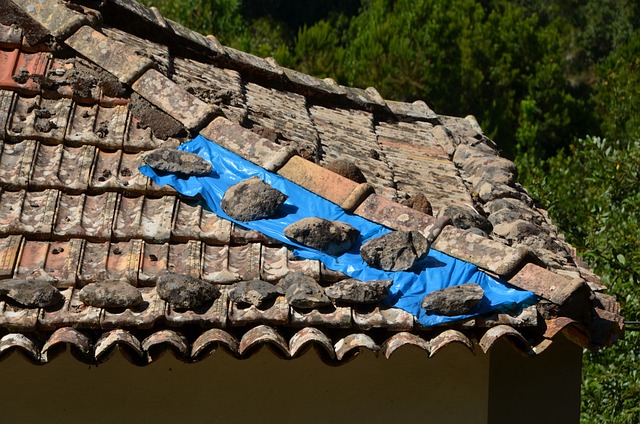Roof penetrations are vulnerable points where building functionality requires structural components like pipes, vents, HVAC units, and cables to pass through the roof. These must be expertly sealed by a roofer to prevent leaks and maintain structural integrity against environmental elements. Advanced sealant technologies, such as elastomeric or bituminous compounds, should be selected based on the roof type and climate conditions for effective sealing. Regular maintenance by skilled roofers is crucial for early issue detection and rectification, extending the building's lifespan and ensuring energy efficiency. Roofers play a critical role in both preventing environmental challenges to the building envelope and addressing issues responsively. Each type of penetration—plumbing vents, flues, skylights, ductwork, and mechanical equipment mounts—requires tailored sealing solutions due to their unique vulnerabilities. Proactive maintenance by a knowledgeable roofer is essential for safeguarding against water damage and maintaining the building's performance. Regular inspections and expert maintenance are key to protecting these critical points.
Maintaining a watertight seal on roof penetrations is an indispensable aspect of commercial and residential weatherproofing, safeguarding structures from the elements. This article delves into the critical role roofers play in this process, examining effective materials, methods for sealing, and the importance of regular maintenance. From understanding common types of roof penetrations and their vulnerabilities to advanced techniques for complex geometries, we explore how professional roofers ensure these vital points remain impenetrable by water. Additionally, we will guide you through a step-by-step approach to sealant application, share insights from case studies, and address frequently asked questions about maintaining watertight integrity. Ensuring compliance with building codes and standards is also paramount, making the selection of an experienced roofer more crucial than ever for your weatherproofing needs.
- Understanding Roof Penetrations and Their Importance for Weatherproofing
- Common Types of Roof Penetrations and Their Vulnerabilities
Understanding Roof Penetrations and Their Importance for Weatherproofing

When addressing the integrity of a building’s roof, understanding and properly managing roof penetrations are paramount for effective weatherproofing. Roof penetrations refer to any point where structural components or systems pass through the roof surface, including pipes, vents, HVAC units, and cables. These openings are critical entry and exit points necessary for building functionality but also present significant challenges in maintaining a watertight barrier against the elements.
A skilled roofer plays an essential role in ensuring that these penetrations remain sealed against rain, wind, and other weather conditions. The expertise of a roofer is required to identify potential leak sources, select appropriate materials for sealing, and apply them correctly. The use of advanced sealant technologies, such as elastomeric or bituminous compounds, tailored to the specific type of roof and environmental factors, is crucial in preventing water intrusion. Regular inspections and maintenance by a professional roofer are necessary to detect and address any issues early, thus safeguarding the structural integrity and longevity of the building. Properly sealed roof penetrations not only protect against leaks but also enhance energy efficiency and reduce the risk of indoor moisture problems, which can lead to mold growth and compromised air quality. Thus, the role of a roofer in this aspect is not just reactive but proactive, ensuring that every potential weak point in a building’s envelope is addressed with precision and care.
Common Types of Roof Penetrations and Their Vulnerabilities

Roof penetrations are points where structural components, such as pipes, vents, and HVAC systems, pass through the roofing system. These openings are critical for building functionality but also potential weak points for water intrusion if not properly sealed. Common types of roof penetrations include plumbing vents, flues, skylights, ductwork, and mechanical equipment mounts. Each type presents its own vulnerabilities that a skilled roofer must address to maintain the integrity of the building’s envelope.
For instance, plumbing vents and flues typically protrude through the roof, creating a direct path for water to enter if sealant degrades over time. Skylights, with their large, transparent surfaces, require specialized sealing systems to prevent leaks from rain or snowmelt. Ductwork penetrations must be sealed at entry and exit points to avoid condensation leaks, which are common in HVAC systems. Additionally, the mounts for mechanical equipment, such as air conditioners or exhaust fans, often involve complex flashing details to prevent water ingress, especially during extreme weather events. A roofer’s expertise is crucial in identifying these vulnerabilities and implementing effective sealing solutions that are both durable and resistant to the elements. This not only protects the interior from water damage but also ensures the long-term performance and energy efficiency of the building. Regular inspections and maintenance by a proficient roofer are essential to preserve the watertight integrity of all roof penetrations.
Effective weatherproofing is paramount for any structure’s longevity, particularly in regions prone to extreme weather. A critical aspect of this defense mechanism is ensuring watertight seals on all roof penetrations. Roofers play a pivotal role in maintaining the integrity of these seals, as they are the first line of defense against water intrusion. By understanding the various types of roof penetrations and their inherent vulnerabilities, professionals can address potential weaknesses proactively. This article has underscored the importance of regular maintenance and the application of advanced materials and techniques to safeguard against leaks. Implementing these practices not only protects the structural integrity of buildings but also safeguards the valuables within from water damage. Ensuring watertight seals is a task that demands attention to detail and expertise, making skilled roofers an indispensable asset in the pursuit of lasting weatherproofing solutions.
